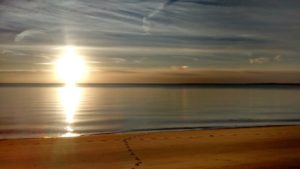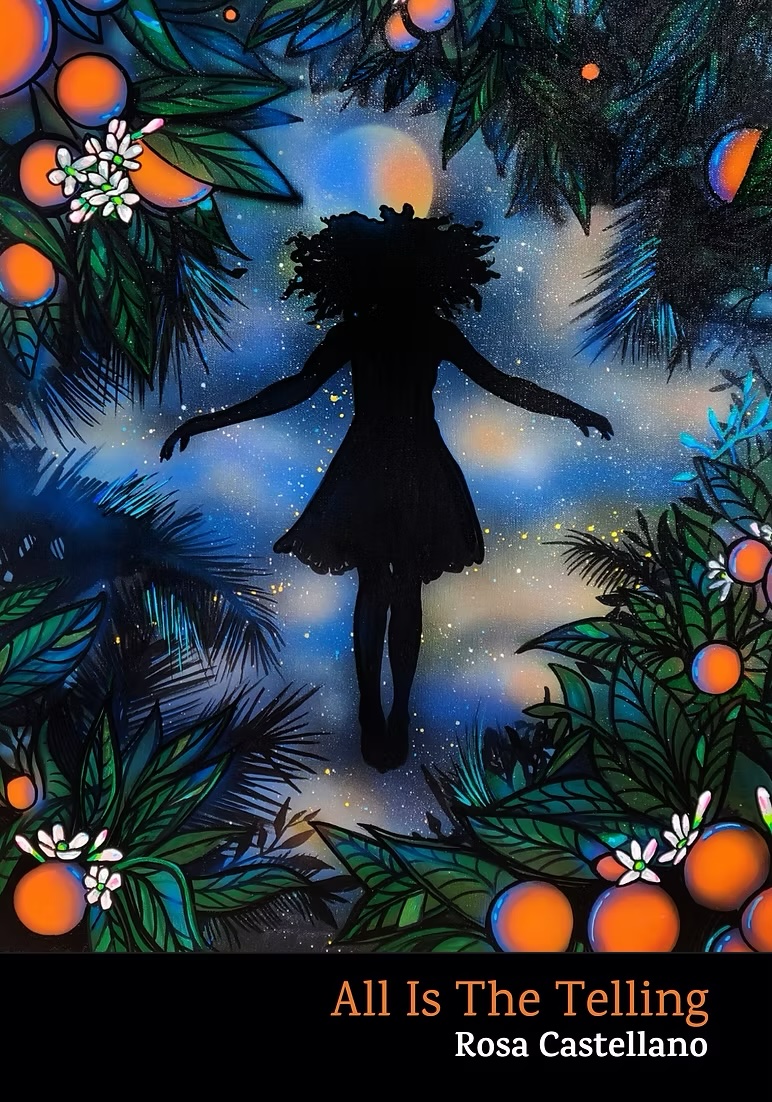With ELIZABETH BRADFIELD

Your name: Elizabeth Bradfield
Current city or town: North Truro, MA
How long have you lived here: Well, that’s not an easy one. There were a few years in Provincetown and then the five or seven years—depending on how you count two of them—I was connected but away. Perhaps it’s simpler to say that I began belonging to this place 17 years ago.
Three words to describe the climate: coastal, seasonal, moody
Best time of year to visit? Each season has its flavor, though I think the late summer/early fall is quite magical. Fewer crowds, Gulf-Stream-warmed water for swimming, a bit of gold in the grasses and lingering evening light that glows on the dunes and across the bay.
1) The most striking physical features of this town are. . .
That the town of North Truro itself is not… or is not quite. It’s more of a spot than a town. We have an intersection with green crosswalks and a flashing traffic light that one direction blinks yellow, the other red. That’s downtown North Truro: post office, market that has organic roasted chickens and Friday wine tastings, mechanic, landscaping business with a yard of trucks and concrete stalls of mulch and gravel, new chocolateria. Oh, and a sandwich/ice cream shop that’s open in summer.
This is narrow land. Only 1.75 miles wide where I live. We define where we’re going by water: ocean-side or bay-side. The highway is the dividing line between. Truro is also semi-rural and semi-wild. The Cape Cod National Seashore owns nearly half the land in the town limits, including rolling hills of stunted pitch pine forest and heathland crisscrossed with trails, most of which are unofficial. It’s hard to get lost in Truro with the highway whining its midline and the ocean roaring its boarder, but the woods can feel like a place apart, which is a great solace when the August beaches are patchworked with towels.
2) Local politics and debates frequently seem to center on. . .
Fishing & fishing regulations, traffic, development, and tourism.
3) Local/regional vocabulary or food?
There are a lot of small farms tucked into various swales of Truro that sell produce, honey, and fresh eggs at weekly markets, to restaurants, from roadside stands. And the sea provides. Residents can get a shellfish permit for $10. That means more oysters than you could ever eat in winter—mussels, surf clams, quahogs, scallops, too. Striped bass, bluefish, fluke if you want to drop a hook and line. Lobster, of course.
And listen to what you get called by the checkout clerk or bank teller, woman or man: darlin’ with a long, flat ah. Listen close. Sometimes it’s fond, sometimes not. Not born here? You’re a washashore. Going up Cape? You’re driving south, toward the bridge. Down Cape means heading for Provincetown, the end of the road.
4) The stereotype of the people who live here and what this stereotype misses. . .
Stereotype A (summer): wealthy psychiatrists vacationing in their summer homes. Stereotype B (winter): drunk, seasonally unemployed locals driving rusty pickups with mesh-netting backs and a frayed rope tied onto the ball hitch. Both stereotypes hit some things and miss everything, of course.
On my street one neighbor is a lobsterman who sells catch from live well tanks in the garage. Another neighbor works for the Department of Public Works. We have a sculptor, the owner of a window-washing business, and a biologist at a non-profit research center. There are kids and retirees, a mix of sexualities and incomes and politics. We stop and chat, windows rolled down, when passing in the road. We wave. We bring each other oysters and help each other shovel snow.
5) Historical context in broad strokes and the moments in which you feel this history. . .
From the shore of North Truro in 1621, you’d have seen the Mayflower anchored in Provincetown Harbor, maybe a small boat rowing toward you from it. Truro was the first settlement site the Pilgrims considered before heading to Plymouth. If you tromped into the woods, you might have run into some of them taking their first sips of New World water at Pilgrim Spring. Corn Hill got its name because—you guessed it—the Pilgrims found and took local Payomets’ corn. So began America. Then it was whalers and fishermen (now whale watching and a bit of fishing—but not cod), cows and farms. All of it blurs to names of ponds, roads, and hills.
What’s really palpable is our geologic history. Truro and all of Cape Cod is new land, created just a few thousand years ago by glaciers and still being rearranged by the sea. This morning, I walked out onto an ocean-side beach pounded by winter storms. At the high tide line was a layer of what, from afar, looked like crumbling blacktop. Up close, it was clearly the bed of an old bog: dark layers of peat were caked together and roots and branches threaded them. The shore had moved. The spot where I was standing, at one time, was inland and protected by dunes, not right on the edge of the ocean. It had gotten buried by sand, and now the ocean had unveiled it again. Yesterday, a friend walking the same beach found a French coin from 1856, most likely wrenched from an old shipwreck. The beach can’t keep a secret for long.
Elizabeth Bradfield is the author of the poetry collections Interpretive Work,Approaching Ice, and Once Removed (forthcoming). www.ebradfield.com



